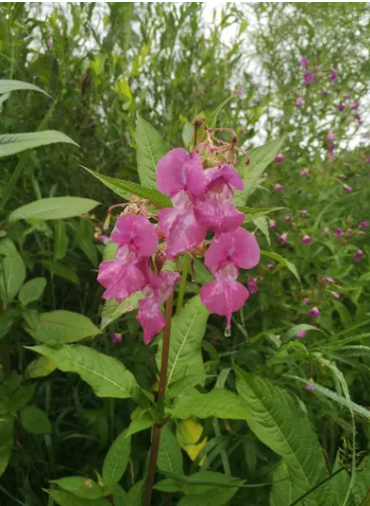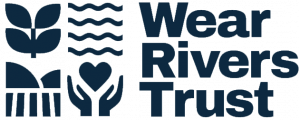DURHAM PENINSULA INVASIVE NON-NATIVE SPECIES
THE PROBLEM WITH INVASIVE NON-NATIVE SPECIES (INNS)
Durham Peninsula is one of the most high profile areas in the Wear Catchment and is unique in its recreational, cultural, and historical value. Unfortunately this is currently being threatened by the presence of three invasive non-native species (INNS) which are taking over the riverbanks in the area: Himalayan Balsam, Japanese Knotweed, and Giant Hogweed.
These species can spread rapidly and quickly become dominant in an area. This will have a number of negative impacts on the area, including:
- A decline in native species as they struggle for light, water, and nutrients
- Riverbanks which are more vulnerable to erosion as they become exposed when aboveground growth of these species dies back over winter
- Impeded access to the riverbanks and the obstruction of iconic views
- Financial impacts from a loss of tourism or the cost of damage caused by Japanese Knotweed in particular
- Health and safety concerns, especially from Giant Hogweed due to its ability to cause severe, recurring burns if the sap comes into contact with bare skin
PARTNERSHIP INNS MANAGEMENT
Himalayan Balsam, Japanese Knotweed, and Giant Hogweed are all notoriously difficult to control, requiring a concentrated effort over multiple years. In addition to this, these species are easily able to re-infest sites which have been controlled from nearby populations. This means that if management efforts are to be successful over the long term, managing infestations within landownership boundaries in isolation is unlikely to be sufficient.
Organisations based around the Peninsula who are invested in controlling these species have therefore come together in an exciting new project aimed at coordinating all INNS control taking place across the project area. By working together to tackle this problem, the Durham Peninsula INNS Project aims to:
- Improve the long term success of INNS management
- Increase the abundance and diversity of native species
- Increase bank stability through better winter vegetation cover
- Improve the aesthetic appeal of and access to the riverbanks leading to health and wellbeing benefits
- Engage with the local community and raise awareness of this issue
- Protect Durham Peninsula’s unique identity

PROJECT AREA
The main project area covers both banks of the River Wear from Shincliffe Bridge to Kepier Hospital. Himalayan Balsam, Japanese Knotweed, and Giant Hogweed are all relatively widespread within this area.
In addition to this Peninsula area, the Old Durham Beck system will also be included in the project area. This is due to its significance as the source of Giant Hogweed to the River Wear; by controlling the presence of Giant Hogweed here, we can minimise the chance of more seeds making their way to the Peninsula and allowing this species to continue infesting the area.
BIOSECURITY
Many freshwater and riparian invasive species are able to spread from one area to another hidden in our clothing, footwear or equipment. One way that we can reduce the likelihood of this happening is by following simple biosecurity measures, such as DEFRA’s Check, Clean, Dry protocol:
CHECK – Check clothing, footwear (including treads) and equipment for mud, plant material (e.g. seeds) or small aquatic animals before leaving the site and remove anything found while still there.
CLEAN – Clean everything thoroughly in hot water as soon as possible, making sure to include damp or hard to reach areas (if you are able to, do this while still at the site).
DRY – Leave everything to dry for as long as possible before using at a new site. Bear in mind certain species can survive for up to 2 weeks in damp conditions.
If you are planning to visit multiple sites, another useful tip is to make sure any sites where invasive species are not currently found (particularly any of significant ecological importance) are visited first while those where invasive species presence has been confirmed are left until last. Following this process will reduce the likelihood of invasive species being inadvertently introduced to new areas.
More information about biosecurity is available at http://www.nonnativespecies.org/checkcleandry/index.cfm
Donate
If you would like to support this project and help us continue this work, please click the link below to visit our donation page.
